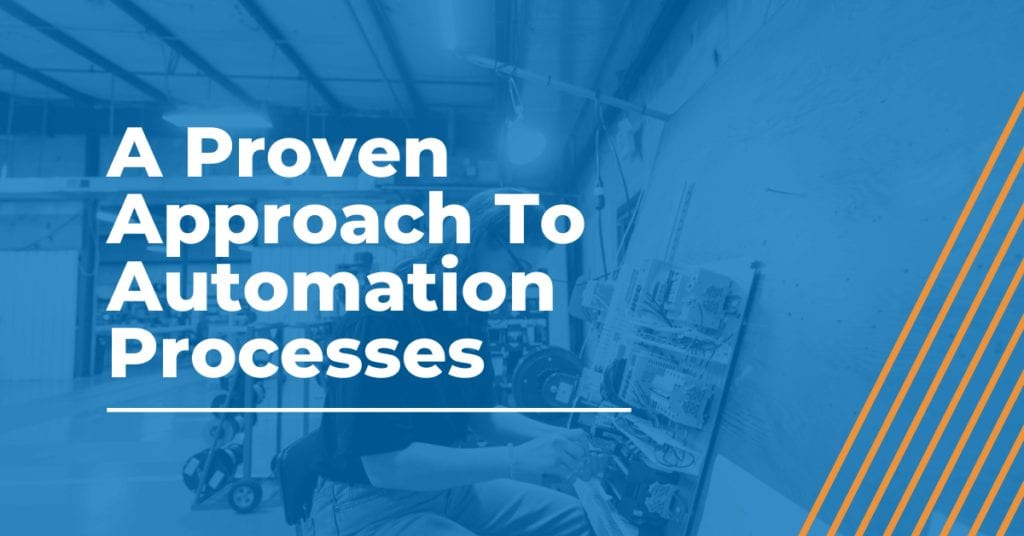
Steps to Success: The 17-Step Automation Process
In a recent interview, Chris Edwall, VP and General Manager, explains the origin of AMS’s 17-Step Automation Process that is used in every project and why it is a key differentiating factor for manufacturers. Check out Our Processes to read about each step individually as well as view a short animation of the 17-Step Process.
It’s All About the Process
Where did the idea for AMS’s 17-Step Process come from?
Chris Edwall: “Back in 2015 or 2016, we were working hard as a company to come up with differentiators; reasons why potential customers would want to choose us over our competitors. That was part of the Traction process that we implemented. The end result of this overall transformation was the creation of our value proposition and the 17-Step Process was developed as another crucial piece to support it.
“The idea that our process, our way of doing business, could be a differentiator and competitive advantage came out of my experience working at other companies like AMS. I knew that to be successful, and to achieve our rapid growth goals, we would require a defined and repeatable process that could be taught to new employees and used with new customers to get repeatable, successful results.
What are some issues the process addresses?
Chris Edwall: “The 17 steps themselves came from best practices that I learned from over 30 years in the industry. For example, in some companies I had worked for, there was an engineering focus, and the engineers would tend to jump right to developing a solution before truly understanding all the customers’ requirements.
“This would lead to customer disappointments down the road or expensive rework for the company. So, step 2 of our 17-Step Process is to “define requirements.” We do this before trying to come up with a solution. As a result, our project success rate and customer satisfaction are generally much higher.”
Happy Customers and No Chaos
What does the process mean for AMS and its customers? How does this reflect the business and its success overall?
Chris Edwall: “Many small companies don’t have defined, repeatable processes. What having the 17-step automation process means to AMS is successful, profitable projects and happy customers. The feeling that we make our customers’ jobs easier when we complete a successful project that is delivered on time is important to us.
“Additionally, the ability to create repeatable results and growth without chaos can sometimes come with challenges. That is why I chose and implemented best practices that I had seen be successful in my industry experience with a half dozen different companies. The 17-Step Process covers the entire cycle of sales through order fulfillment. It begins with a prospect identifying a need and extends all the way through delivery of the system and post-delivery check-ins.
“No matter the application or the industry, the steps to success are the same. That is important because we know the process is proven and following the steps will result in success.”
How do customers react to AMS’s automation process and what does it mean for them?
Chris Edwall: “What the process brings to our customers is successful projects, delivered on time, with extremely high customer satisfaction. Our customers feel that we make their jobs easier.”
Discover the 17-Step Automation Process
Have an idea for a new product or looking for ways to make your current manufacturing processes more streamlined and profitable? Learn how our automation process could benefit you with a complimentary application review. Book your no-obligation call today.
